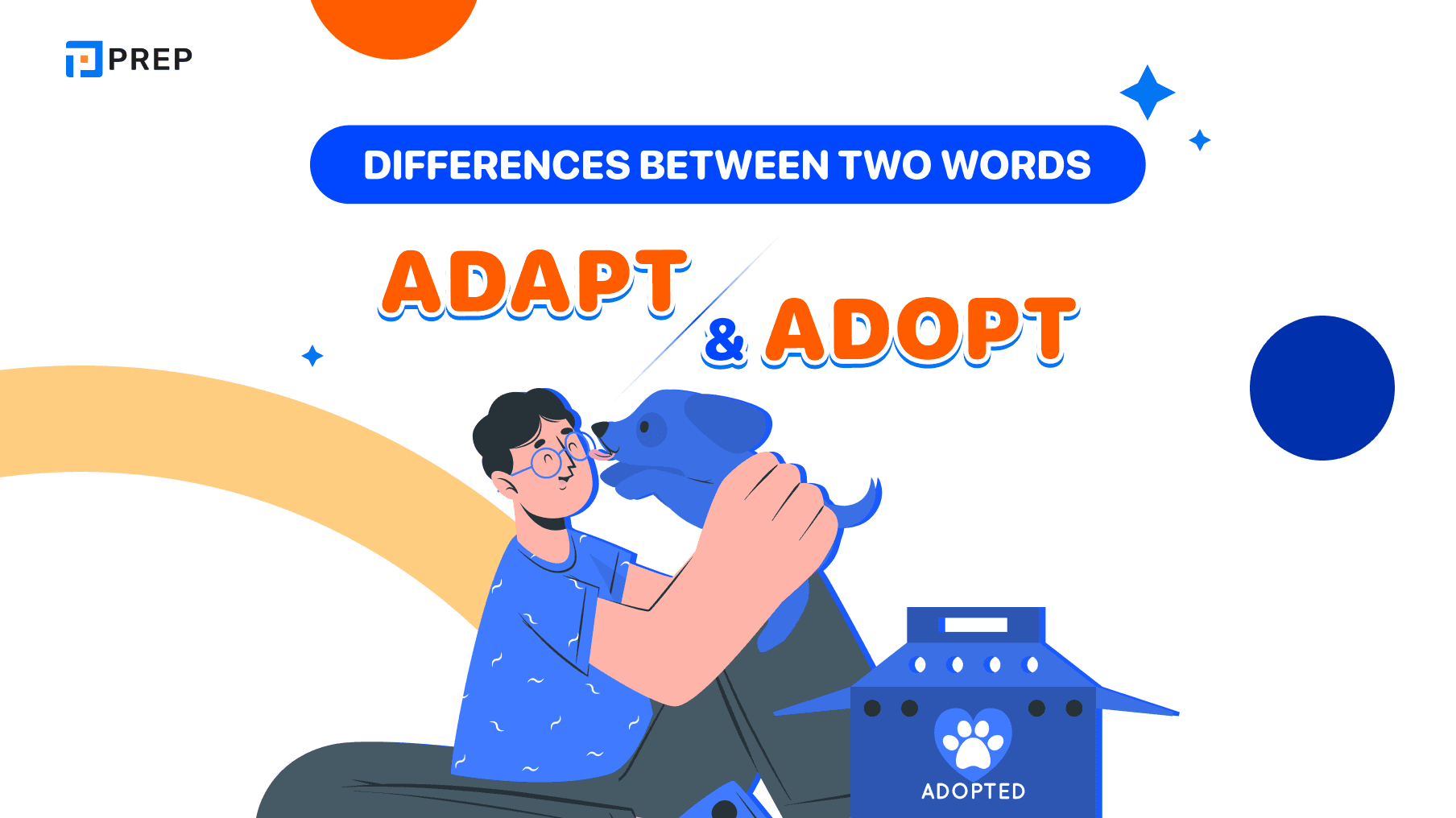Adapt and Adopt: A Strategic Framework for Making the Right Choice
What appears as a simple vocabulary distinction between adapt and adopt reveals itself as a sophisticated strategic framework for organizational decision-making. The implications extend far beyond vocabulary into critical business strategy.
The central innovation is a 5-point decision framework evaluating economic reality, operational velocity, human elements, strategic alignment, and future-proofing capabilities. Leaders use systematic analysis to navigate complex choices about modifying existing solutions versus embracing new ones entirely.

I. The Critical Decision Beyond the Definition
The difference between adapt and adopt seems simple until a multi-million dollar project, a company's culture, or your competitive edge depends on it. While dictionaries offer straightforward definitions, the strategic implications of choosing one path over another can determine whether your organization thrives or merely survives in today's rapidly evolving business landscape.
You might have arrived here seeking a quick clarification between these two concepts, but the reality runs much deeper than semantic distinctions. Every successful leader, whether managing a startup's technology stack or steering an enterprise through digital transformation, faces moments where this choice becomes the fulcrum upon which entire strategies pivot.
II. What is Adapt?
Before distinguishing between Adapt and Adopt, let's find out together with PREP what Adapt means and memorize some words/phrases associated with Adapt below!
1. Definition
What is adapt? According to the Cambridge Dictionary, Adapt is pronounced as /əˈdæpt/. In a sentence, Adapt functions as a verb, meaning: to adjust to different conditions or uses, or to change to meet different situations. For example:
-
We had to adapt our plans to fit John's timetable.
-
It took me two months to adapt to the new job.
2. Words/phrases associated with Adapt
The phrases associated with Adapt are also often confused with Adopt. To accurately distinguish between Adapt and Adopt, let's memorize some words/phrases in the table below together with PREP:
|
Words/phrases associated with Adapt |
Example |
|
Adapt to change |
A large organization can be slow to adapt to change. |
|
Adapt to the conditions |
The company was able to adapt to the conditions and enhance its position. |
3. The structure with Adapt
Before going to distinguish between Adapt and Adopt, let's go through the 8 structures with Adapt and examples below!
|
The structure with Adapt |
Example |
|
Adapt something |
The project has to be adapted to suit the current situation. |
|
Adapt something for something |
They adapted the software for mobile devices to meet the increasing demand for smartphone applications. |
|
Adapt something from something |
The film director adapted the plot from a best-selling novel to create a compelling screenplay. |
|
Adapt something for something from something |
The architect adapted the building design for the new environmental regulations from the original blueprints. |
|
Adapt from |
The fashion designer adapted her latest collection from vintage styles of the 1950s. |
|
Adapt to something |
Employees need to adapt to new technologies to stay competitive in the ever-evolving business environment. |
|
Adapt to doing something |
Peter has adapted very well to running a multinational. |
|
Adapt yourself to something |
Moving to a new country requires the ability to adapt yourself to a different culture and lifestyle. |
III. What is Adopt?
To distinguish between Adapt and Adopt, let's find out together with PREP what Adopt means and memorize some words/phrases associated with Adopt below!
1. Definition
What is Adopt? According to the Cambridge Dictionary, Adopt is pronounced as /əˈdɑːpt/. In a sentence, Adopt functions as a verb, meaning:
-
To legally take another person's child into your own family and take care of him or her as your own child. For example: They've adopted a baby girl.
-
Take an animal that has been left in a place such as a rescue centre, and keep it as your pet. For example: Only about 20 percent of all dogs and cats that come into the rescue center will be adopted.
-
To accept or start to use something new. For example: I think it's time to adopt a different strategy in my dealings with Jack.
-
To choose someone or something or take something as your own. For example: Dr Kennedy has been adopted as the party's candidate for South Cambridge.
-
To start to use a new method, system, law, etc. For example: The government adopted a resolution on disarmament.
2. Words/phrases associated with Adopt
Let's memorize some words/phrases related to Adopt together with PREP, to help you more accurately distinguish between Adapt and Adopt!
|
Words/phrases associated with Adopt |
Example |
|
Adopt an approach/ strategy/ policy |
The company decided to adopt a customer-centric approach to enhance satisfaction and loyalty. |
|
Adopt a measure/ system/ plan |
In response to the safety concerns, the government chose to adopt strict measures to control traffic in the area. |
|
Adopt a resolution/ regulation/ solution |
During the meeting, the committee voted to adopt a resolution supporting environmental sustainability initiatives. |
|
Adopt a name/ title/ language |
When they officially founded the business, they decided to adopt the name "Innovatech" to reflect their focus on innovation. |
3. Common structure with Adopt
Let’s explore some common structures of Adopt with examples below!
|
Common structure with Adopt |
Example |
|
S + adopt + Noun |
Ms. Andrea adopted three children from the orphanage. |
|
The people adopted Jackson as their patron saint. |
|
|
The council is expected to adopt the new policy at its next meeting. |
IV. The differences between Adapt and Adopt
In the previous sections, PREP has provided an overview of knowledge about Adapt and Adopt. So based on what features can we accurately distinguish between Adapt and Adopt? Please check the table below!
|
|
Adapt |
Adopt |
|
Pronunciation |
/əˈdæpt/ |
/əˈdɑːpt/ |
|
Meaning |
to adjust to different conditions or uses, or to change to meet different situations |
to legally take another person's child into your own family and take care of him or her as your own child/ take an animal that has been left in a place such as a rescue centre, and keep it as your pet; to accept or start to use something new; to choose someone or something or take something as your own; to start to use a new method, system, law, etc. |
|
Example |
Jackson's family has to adapt to the new living environment. |
Jackson's family adopted two cats from the rescue center last week. |
V. The Core Strategic Framework: Your 5-Point Decision System
Deciding whether to adapt and adopt isn’t just a matter of word choice—it’s a strategic decision that requires careful analysis across five critical factors. These dimensions help ensure your decision aligns with both short-term needs and long-term goals.
1. Economic Reality
Begin with financial viability. Evaluate Total Cost of Ownership (TCO) over time.
-
Adapt when modifying your current system (e.g., $50,000) is significantly more cost-effective than adopting a new one with steep licensing and implementation fees.
-
Adopt when maintaining legacy infrastructure becomes financially draining (e.g., $300,000/year) and modern solutions offer equivalent functionality with reduced support and upgrade burdens.
2. Operational Velocity
For adapt and adopt, time is often the most limited—and valuable—resource.
-
Adapt when minor changes (e.g., API integrations) meet your needs quickly—like enabling analytics within four weeks to meet a seasonal opportunity.
-
Adopt when time-sensitive demands (e.g., scaling for a major launch) exceed your current system’s capabilities, and proven platforms can deliver immediately
3. The Human Element
Technology doesn’t exist in a vacuum—your team’s capacity for change matters.
-
Adapt if your current workforce has the expertise and motivation to improve existing systems. This maintains institutional knowledge and team morale.
-
Adopt if cultural transformation is the goal and a new system can be a catalyst—especially when aligned with reskilling and hiring strategies.
4. Strategic Alignment
How does the decision fit into your broader competitive positioning?
-
Adapt to preserve unique capabilities—like a proprietary logistics algorithm—while making integrations or upgrades.
-
Adopt when standardized processes (e.g., SAP for supply chain) help you integrate with partners or meet market expectations.
5. Future-Proofing
Think ahead about adapt and adopt. Can your choice support future scale and change?
-
Adapt if your architecture is sound and scalable, and your team can continue evolving it.
-
Adopt when legacy systems face end-of-life or market shifts demand modern, well-supported alternatives.
Now that you are equipped with a robust framework for making the primary decision between adapt and adopt, the strategic thinking doesn't stop there. The most experienced leaders anticipate the nuanced challenges and edge cases that arise during implementation. This next section enhances your expertise by addressing the critical follow-up questions that separate a good decision from a great one, providing insights that only come from years of practical experience navigating these complex organizational challenges.
VI. Advanced Insights & Critical Questions (FAQ)
-
What is the difference between adapt and adopt?
-
Adopt means to take something in and make it your own, typically without changing it. It involves acceptance, taking on, or formally choosing something.
-
Adapt means to change or modify something to make it suitable for new conditions or purposes. It involves adjustment, modification, or making alterations.
-
Key difference: Adopt = take as is, Adapt = change to fit
-
Is it to adapt and adopt a baby?
You adopt a baby, not adapt. When you adopt a child, you legally take them into your family and make them your own child. The word "adapt" would be incorrect in this context because you're not changing or modifying the baby - you're accepting them into your family.
Example: "The couple decided to adopt a baby from the local adoption agency."
Are adopt and adapt similar?
While adapt and adopt may sound similar and are often confused, they have distinctly different meanings:
Similarities:
-
Both start with "ad-"
-
Both involve taking action with something
-
Both can involve making something part of your life or situation
Key differences:
-
Adopt = accept without changing
-
Adapt = modify to fit new circumstances
-
Adopt often involves a one-time decision
-
Adapt typically involves an ongoing process of change
-
What is the difference between adopted and adapted scales?
Adopted scales are measurement tools or rating systems that you take and use exactly as they were originally designed, without making any changes.
Adapted scales are measurement tools that you modify or adjust to better fit your specific research needs, population, or context.
Examples:
-
Adopted scale: Using the original 10-item Patient Health Questionnaire (PHQ-10) exactly as published
-
Adapted scale: Modifying the PHQ-10 by changing the language for a different cultural group, shortening it to 5 items, or adjusting the response options
VII. Conclusion
The distinction between adapt and adopt goes beyond definitions—it's strategic thinking that drives organizational success. Your mastery of the five-point decision framework (economic reality, operational velocity, human elements, strategic alignment, and future-proofing) enables confident decision-making in complex business environments.
The most successful organizations use hybrid strategies, adapting proven solutions to create competitive advantages while maintaining adoption's reliability benefits. Whether modifying existing systems or embracing new solutions, success depends on systematic analysis of these factors and alignment with your organization's strategic objectives and change capacity.

Hi I'm Chloe, and I am currently serving as an Product Content Administrator at Prep Education. With over five years of experience in independent online IELTS study and exam preparation, I am confident in my ability to support learners in achieving their highest possible scores.
Comment
Premium content
View allPersonalized roadmap
Most read












